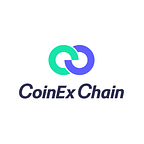B1B-A276 Interoperability in Blockchain: Technological Challenges and Solutions for Cross-Chain Interaction between Different Public Blockchains
Public blockchains have long faced limitations due to a lack of interoperability between different blockchain networks. Each blockchain essentially operates as a self-contained separate entity, unable to seamlessly communicate or transfer data and assets across chains. Before the development of interoperable blockchain networks, blockchains operate in isolation, unable to seamlessly transfer assets or data across chains. This hindered the full potential of blockchain technology, preventing it from achieving widespread adoption and interconnectivity.
Importance of achieving cross-chain interoperability
Cross-chain interoperability is critical for unlocking the full capabilities of public blockchains. Cross-chain Interoperability enables assets like cryptocurrencies and NFTs to be bridged between blockchains, enhancing liquidity and capital efficiency.
It also allows decentralized applications to leverage the strengths of multiple blockchain networks through interconnected smart contracts. Cross-chain Interoperability also facilitates the formation of integrated blockchain ecosystems rather than single chains. Overcoming this interoperability barrier is essential for blockchain technology to reach its transformative potential across industries.
Technological Challenges in Achieving Cross-Chain Interoperability
Achieving seamless cross-chain interoperability poses significant technological hurdles. Different blockchains operate with varying consensus mechanisms, architectures, and data structures, making communication and asset transfers extremely complex. Developing standardized protocols and bridging frameworks that can translate between disparate blockchain systems is a major challenge. Ensuring security and trust across interoperating chains, preventing double-spending, and managing asset liquidity also require innovative decentralized solutions.
Additionally, the need to maintain data privacy and comply with varying regulatory landscapes across blockchains adds further complications. Overcoming these technological barriers demands innovative breakthroughs in areas like cryptography, distributed systems design, and blockchain integration frameworks to enable a truly cross-chain interoperable decentralized ecosystem.
Existing Solutions and Approaches: Cross-Chain Bridges
One promising approach to enabling cross-chain interoperability is the development of cross-chain bridges and relay networks. These allow tokens and data to be securely transferred between different blockchain ecosystems. However, many current bridges rely on centralized components or trusted parties, reintroducing points of vulnerability. A more decentralized solution lies in IBC (Inter-Blockchain Communication) protocols like Cosmos.
Cosmos aims to create an “Internet of Blockchains” where distinct blockchains, called zones, can interoperate seamlessly through a hub facilitated by IBC. This allows assets, code, and data to be reliably exchanged across zones in a trustless, decentralized manner.
Introduction CSC Cross-Chain Bridges and CSC
The CoinEx Smart Chain (CSC), a high-performance public blockchain focused on decentralized finance, has introduced an innovative Cross-Chain Bridge. This bridge represents a significant milestone in enhancing interoperability and supporting robust public blockchain infrastructures. The CSC Cross-Chain Bridge enables seamless and secure asset transfers between the CSC Mainnet and other compatible blockchain networks. Leveraging advanced cryptography and smart contract functionality, it facilitates trustless cross-chain asset swaps while ensuring transaction security.
By bridging the CSC ecosystem with other chains, this solution enhances accessibility, liquidity, and interconnectivity within the decentralized finance landscape. The Cross-Chain Bridge showcases CSC’s dedication to creating an interconnected and flexible ecosystem that allows users to seamlessly interact with various digital assets across multiple blockchain networks.
Future Outlook and Potential Developments
The future of cross-chain interoperability holds immense promise as the blockchain ecosystem continues to evolve. Emerging trends like trusted execution environments, zk-rollups, and validium chains are paving the way for more secure and scalable cross-chain communication. Some projects are also working on new secure ways to enable cross-chain transfers using advanced cryptography techniques like zero-knowledge proofs. These advancements could enable assets and data to seamlessly transition between blockchains while maintaining privacy and scalability.
Looking ahead, more advanced cross-chain interoperability is vital for the broader adoption and impact of blockchain technology. An interconnected blockchain ecosystem would unlock new levels of innovation, and value creation across industries. Decentralized applications and services could seamlessly integrate multiple blockchain capabilities, leading to optimized solutions. Interoperability also facilitates increased liquidity and composability in decentralized finance. Ultimately, solving the interoperability challenge is important for blockchain to reach its transformative potential.
